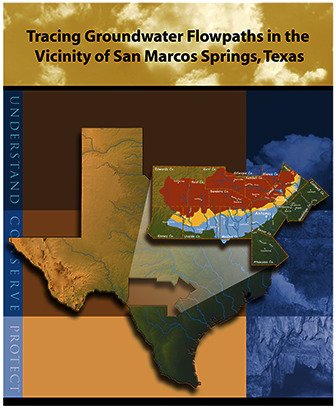|
This report presents the findings of investigations by the Edwards Aquifer Authority (EAA) along with other agencies regarding groundwater flowpaths in the San Marcos Springs springshed. The purpose of this study was to characterize the nature of groundwater flow to San Marcos Springs in the Edwards Aquifer recharge zone in Hays County in south-central Texas. Part of the investigation was focused on defining the groundwater boundary between San Marcos Springs in the southern segment of the Edwards Aquifer and Barton Springs in the Barton Springs segment of the Edwards Aquifer. The scope of this investigation consisted of 31 tracer tests (dye injections) completed between 2002 and 2010 at various locations in the vicinity of San Marcos Springs. Results of the tracer tests revealed discrete groundwater flowpaths and groundwater velocities up to several thousand feet per day connecting the recharge zone to San Marcos Springs and Barton Springs, which is consistent with the karstic nature of the Edwards Aquifer. The results indicated that San Marcos Springs and Barton Springs are important discharge points for the regional Edwards Aquifer flow system. Based on the fastest groundwater velocities, San Marcos Springs receives most of its recharge from the southwest along the San Marcos Springs Fault and smaller amounts from west and north of the springs. The boundary between San Marcos Springs and Barton Springs springsheds lies near the confluence of the Blanco River and Halifax Creek under drought conditions when Onion Creek is dry. The divide moves north along Onion Creek in the recharge zone during wetter conditions when Onion creek is flowing and recharging groundwater. Consequently, the Blanco River can recharge both spring complexes depending on hydrologic conditions.
|

